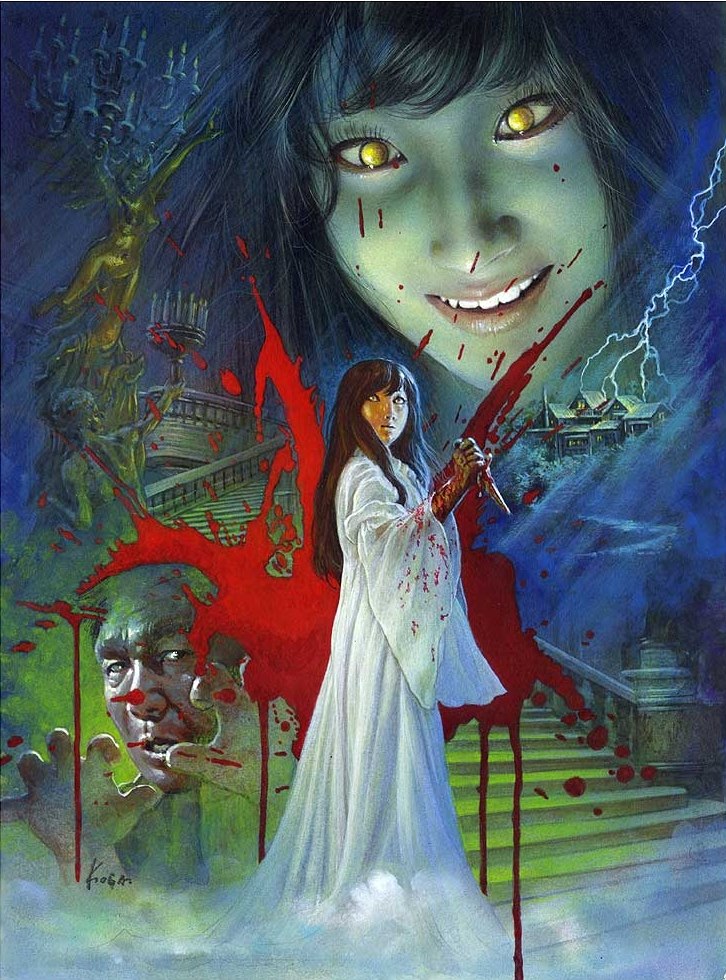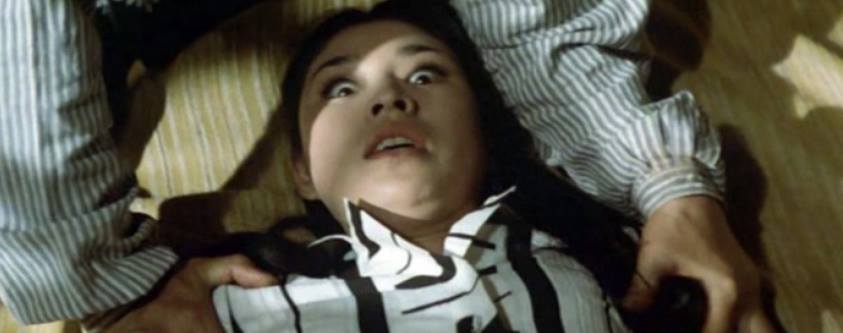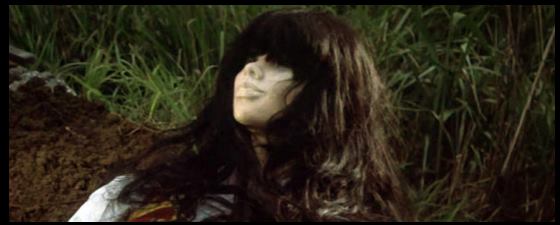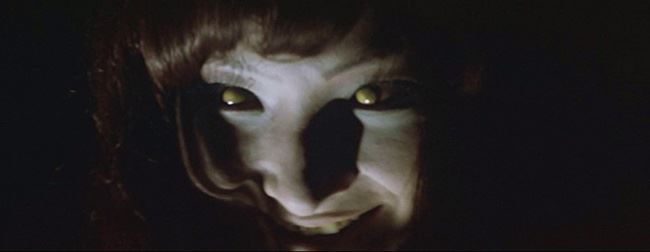
Hey, anyone want to see a Japanese horror film that mashes up Psycho, Poe, Dracula, Mario Bava, Hammer films, and into this goulash, throws in a little sprinkling of revenge, ‘kaidan‘-style? Then pull out your mail-order DVD-Rs, (which often also include Evil of Dracula and Lake of Dracula), or if you are exceptionally lucky, like I was, go to a local art-house theater and catch Michio Yamamoto’s The Vampire Doll (aka Fear of the Ghost House: Bloodsucking Doll, 1970). I saw this film on a big screen at the Spectacle, a small art house venue in Brooklyn, specializing in obscure films and, well, things you just aren’t going to see anywhere else, even in New York.
The film’s opening does not disappoint, starting with a tense scene of a taxi driving through a raging thunderstorm to get its passenger, Kazuhiko Sagawa (Atsuo Nakamura) to an obscure house in the mountains. It’s clearly a reference to the carriage traveling in the rain to Dracula’s castle, and I was half-expecting to see Carla Laemmle reading about the Nosferatu, but instead, Kazuhiko tips his driver and enters the house.
His relief in getting out of the rain and wind is short-lived, though as he learns that his fiancee, Yuko Nonomura (Yukiko Kobayashi), had been tragically killed only weeks before. In shock, Kazuhiko retreats to a bedroom to wait out the storm, but then he hears strange noises coming from another room. Events lead him outside to the grave of his beloved, where he is in for a big surprise.

The story abruptly cuts to the bedroom of Kazuhiko’s sister, Keiko Sagawa (Kayo Matsuo), who wakes up sensing that her brother is in danger. Enlisting the help of her boyfriend, Hiroshi (Akira Nakao) they investigate his disappearance, themselves becoming part of the mystery of what is going on in this house of secrets. Before the story is concluded, we get multiple murders, dolls hidden in graves, hypnosis (with this a very obscure connection to a Poe story, “The Facts in the Case of M. Valdemar”), and yes, even survivor guilt from WW II. Vampire stories are typically related to a gothic updating of The Sleeping Beauty fairytale, stories about enmeshed families, often bound together by an evil curse, and who are in some way frozen into inaction – usually this stasis is broken by a visitor or stranger, which can have productive or disastrous results. This film follows that pattern in a deliberate attempt to emulate the success of Hammer films, which were at their peak about that time.
With The Vampire Doll, Michio Yamamoto has taken a huge number of ideas from different films – affectionately shaken, (not stirred) them, and has come up with a storyline from Psycho, visuals from Mario Bava films, a plot explanation from Poe, a thematic sensibility from the Hammer vampire films, all this seasoned with elements of ‘kaidan,’ the traditional horror genre of revenge and the return of bad karma. The Vampire Doll was one of three films later known as the “Bloodthirsty Trilogy,” films that Toho did when they weren’t sending Godzilla around to either destroy or save the earth.

The Vampire Doll’s plot is just complicated enough not to be banal, and offers some real scares in its fast 90 minutes – like most pre-1990 horror films, the fear is produced by truly eerie situations, not just by one shock cut after another – but remember that this film was released in 1970 and was designed to be enjoyed in a theater with a crowd, so be aware this review is from that experience, and not from watching it on a small screen or computer monitor, so your experience may be different from mine. Of course, if you get a chance to see The Vampire Doll on a big screen, drive through that thunderstorm, find that obscure small theater in mountains, and enjoy !




